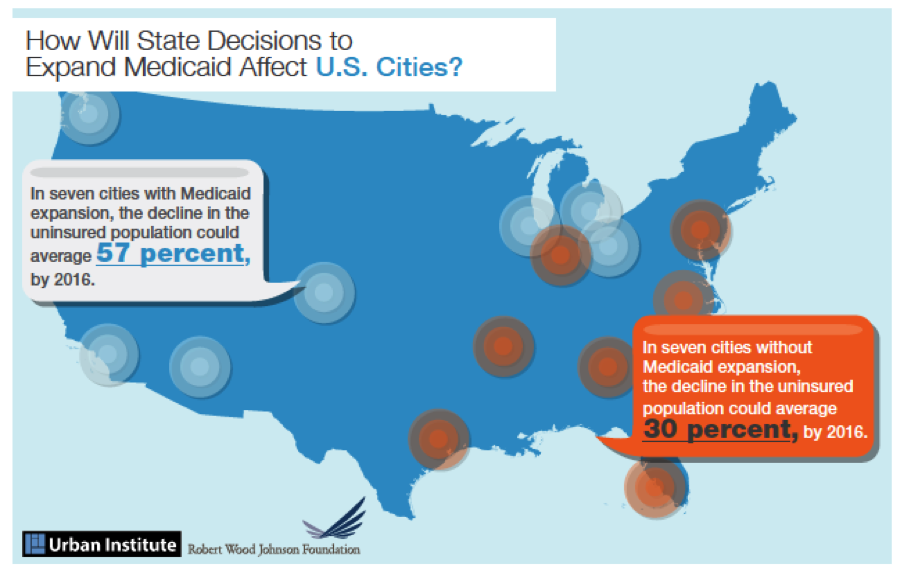The Affordable Care Act (ACA) increased the likelihood individuals have insurance by: (i) offering states money to expand Medicaid eligibility, and (ii) offering individuals subsidies to purchase insurance through newly created health insurance exchanges. Did it work? A Robert Wood Johnson report examines at the effect of the ACA on uninsurance rates in 14 large cities: Atlanta, Charlotte, Chicago, Columbus, Denver, Detroit, Houston, Indianapolis, Los Angeles, Memphis, Miami, Philadelphia, Phoenix, and Seattle. They found:
- Among the seven cities in states that have expanded Medicaid, the ACA will likely decrease the number of uninsured by an average of 57 percent. City by city, the reduction is projected to vary between 49 percent in Denver and 66 percent in Detroit by 2016. New federal spending on health care from 2014 to 2023 would range from $4.1 billion in Seattle to $27 billion in Los Angeles.
- Among the seven cities in states not expanding Medicaid, the ACA will likely decrease the number of uninsured by an average of 30 percent. The decrease would range from 25 percent in Atlanta to 36 percent in Charlotte by 2016. New federal spending due to the ACA from 2014 to 2023 would increase by between $1.9 billion in Atlanta and $9.9 billion in Houston.
- If Medicaid eligibility were expanded in these cities, the number of uninsured would fall by an average of 52 percent, ranging from 45 percent in Houston to 59 percent in Memphis. New federal spending would increase by between $4.8 billion in Atlanta and $16.4 billion in Houston from 2014 to 2023.
We certainly see some crowd-out employer-sponsored health insurance with Medicaid and private non-group health insurance. The report states that: “In most of the cities we considered, the share of adults
with employer-sponsored insurance is noticeably lower.”

1 Comment